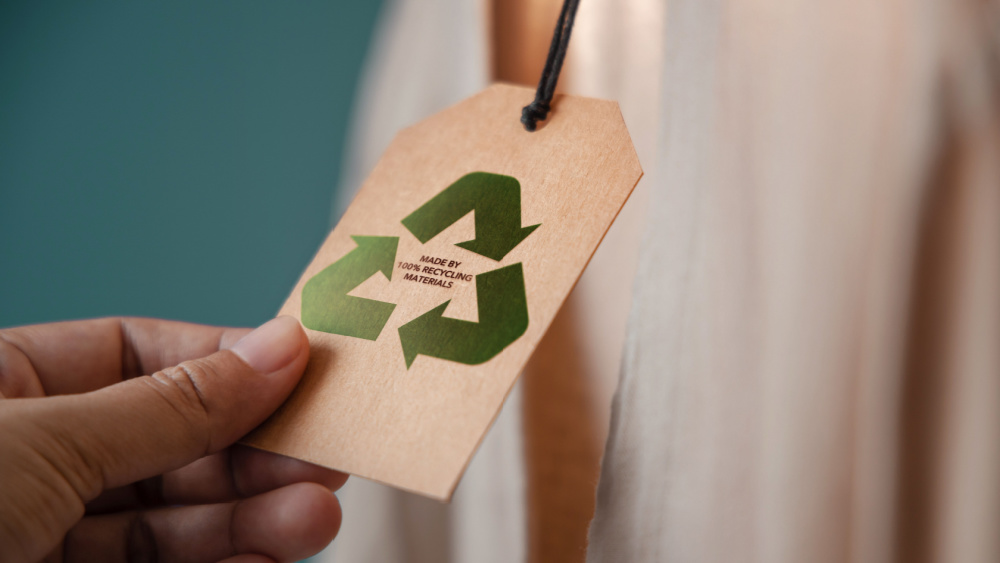SDGs & me: Responsible consumption and production

Consumption and production patterns have wide environmental and social impacts. The Sustainable Development Goal ‘Responsible consumption and production’ (SDG 12) calls for action on many fronts, including the adoption of sustainable practices by businesses, promotion of sustainable procurement practices by policymakers and environmentally aware lifestyles of consumers.
Monitoring SDG 12 in the EU context focuses on progress made in decoupling environmental impacts from economic growth, fostering the green economy, while tackling waste generation and management.
Source dataset: SDG_12_21, SDG_12_41, SDG_12_61
In 2023, raw material consumption in the EU decreased by 5% (14.1 tonnes per capita) compared with 2018 (14.9 tonnes per capita).
The share of secondary raw materials out of all input materials in the economy (‘circularity rate’) stood at 11.5% in 2022. This means there had been no change since 2017.
In addition, in 2021, the gross value added in environmental goods and services sector increased by 0.28 percentage points (pp), from 2.24% in 2016 to 2.52% of gross domestic product (GDP).
The raw material consumption (material footprint) shows the amount of extraction required to produce the products demanded by final users in the geographical reference area. In 2023, it shows the data of the 4 main categories with non-metallic minerals accounting for the highest proportion of 52.3%, followed by biomass (21.8%), fossil energy carriers (18.1%) and metal ores (7.8%).
How is your country doing?
Do you know how much waste is generated in your country? What about the extent to which recycled materials are used to create new products?
The visualisation tools in our data visualisation ‘SDGs & me’ will help you to easily explore and evaluate the situation in your country as well as enable you to compare it to others.
Select a country in the header below and choose between different SDG 12 indicators:
The European Commission has recently adopted an important package of measures for the sustainable use of key natural resources. The aim is to strengthen the resilience of natural ecosystems across the EU, better help Europe to adapt to climate change, and to ensure lasting food and material security.
Resource on these measures can be accessed here:
- Adoption of European Sustainability Reporting Standards: Q&A
- Soil monitoring and resilience: Q&A with links to legal texts and factsheet
- New Genomic Techniques: Q&A with links to legal texts, factsheet and animation
- Plant and forest reproductive material: Q&A with links to legal texts and factsheet
- Food waste: Q&A with links to legal texts, factsheet and background material
- EU strategy for sustainable and circular textiles
Would you like to learn more?
You can find out more about the EU’s progress towards the SDGs with the following communication products and activities:
- The publication Sustainable Development in the European Union – Monitoring report on progress towards the SDGs in an EU context – 2024 edition and the corresponding brochure provide an overview of progress towards the SDGs in the EU;
- The visualisation tool - SDG country overview - which compares country level data with the EU average for each SDG;
- The recording of the webinar on the EU’s progress, held on 20th June;
- The annual conference dedicated to renewables and energy efficiency, held from 11th-13th of June, on the occasion of the European Sustainable Energy Week 2024.
For more information
- Set of Statistics Explained articles on sustainable development in the EU
- Thematic section on the Sustainable Development Goals
- Database on the Sustainable Development Goals
- EU Voluntary Review on progress in the implementation of the 2030 Agenda for Sustainable Development
- Statistical annex to the EU voluntary review – 2023 edition
- United Nations 2030 Agenda for Sustainable Development
If you have any queries, please visit our contact us page.

